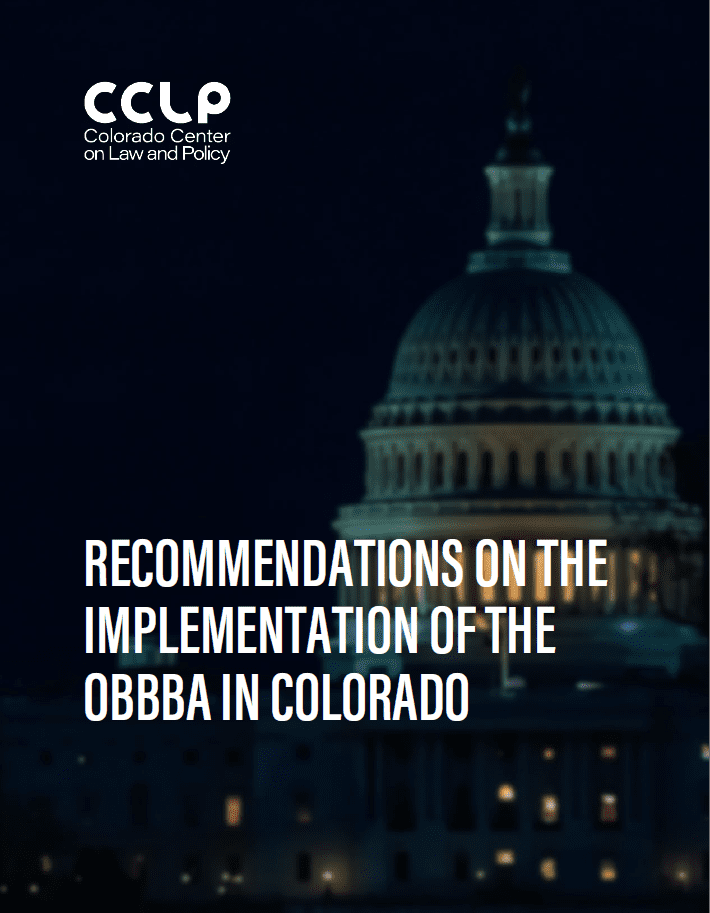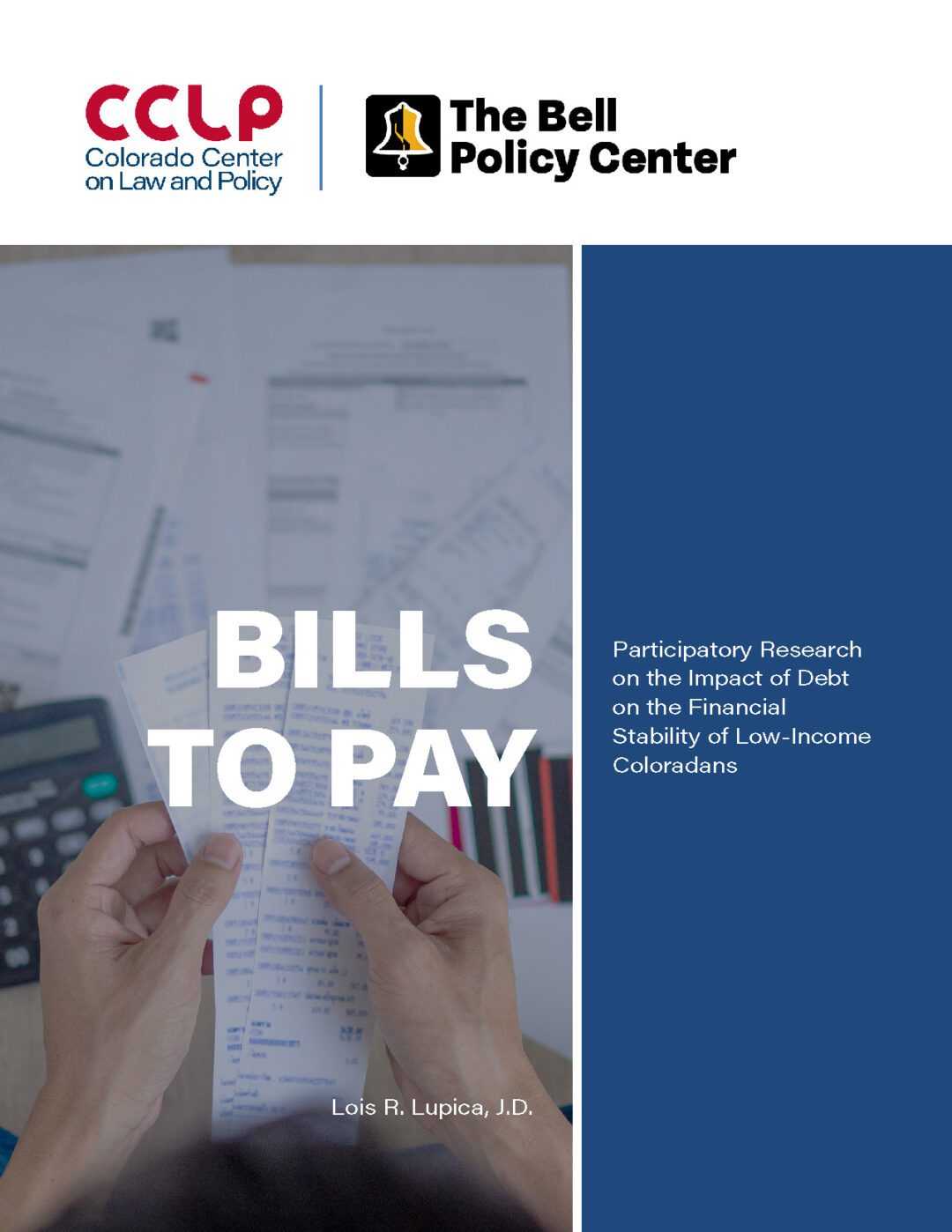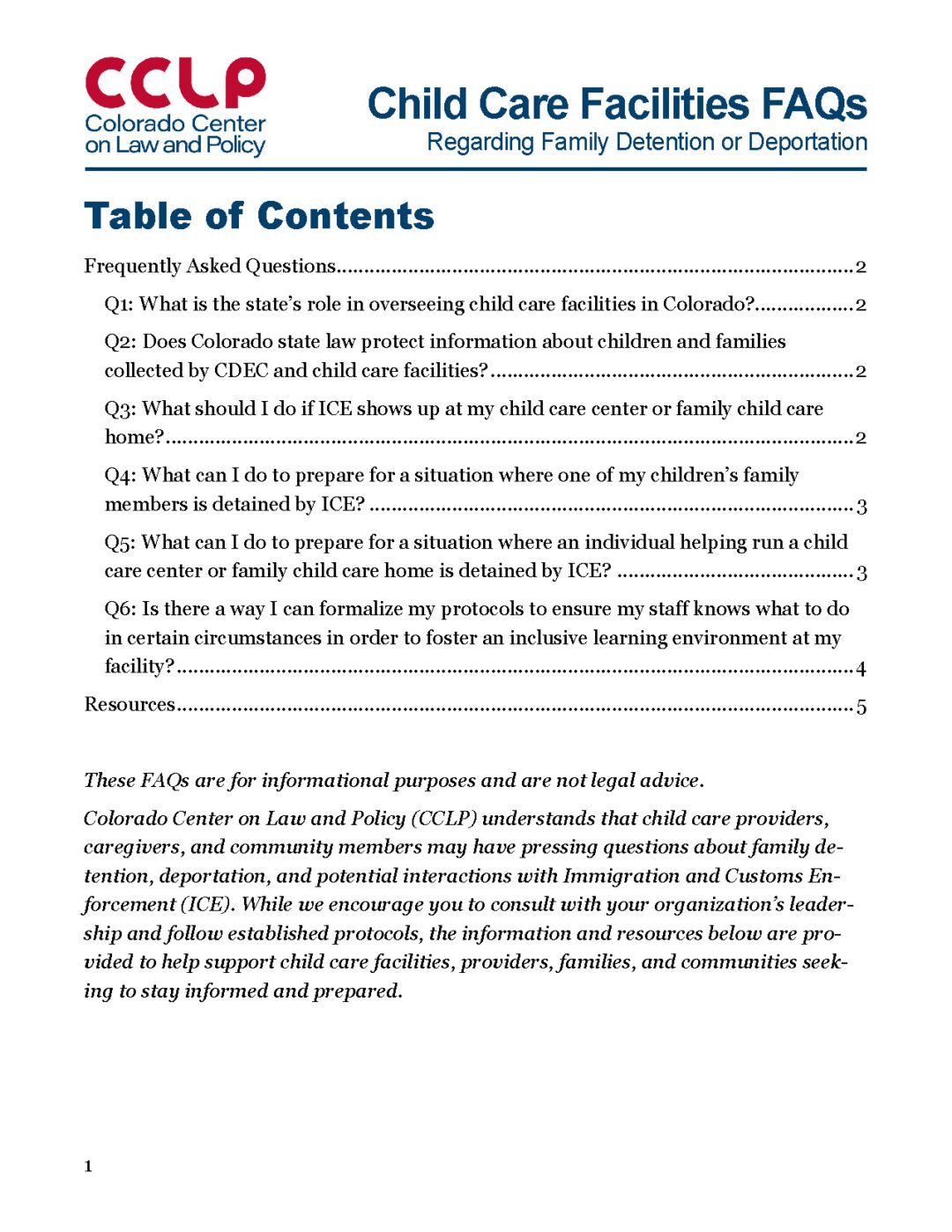View File
The Colorado Center on Law and Policy recognizes that many Colorado elders age 65 and over struggle to make ends meet. Living costs are high, especially for housing and health care. In the face of rising expenses, many elders receive only a modest cost-of-living adjustment each year; thus, they are spending down retirement savings and/or facing growing debt. At the same time, older people face a challenging future if their life circumstances change due to illness, loss of a spouseor partner and/or growing needs for help with daily tasks. Older women are particularly challenged with income and assets that are typically lower than men’s. Their longer lifespan also means that they more often live with chronic illnesses and high health costs.
In an effort to address these issues, the Colorado Center on Law and Policy joins the National Elder Economic Security Initiative launched by Wider Opportunities for Women in Washington, DC. Critical to the work is a new measure of income adequacy—the Elder Economic Security Standard Index (Elder Index). In contrast to the federal poverty level, which measures income inadequacy, the Elder Index is a measure of well-being identifying the income and supports needed for older adults to live modestly in the community. The Elder Index for Colorado was tabulated using the WOW—University of Massachusetts Boston Gerontology Institute (GI) national methodology.
Key Findings:
1. In Colorado, elders cannot meet their basic living expenses if they live at the federal poverty level or the level of the average Social Security benefit. This is true of elders statewide, whether they rent or own a home.
• About 9% of Colorado’s older adults live at or below the federal poverty level.
• Social Security is the only source of income for more than one out of four older adults in Colorado, the majority of whom are women (AARP 2008).
• Expenses vary widely across types of communities. For example, elder homeowners with no mortgage who live alone in Teller County need $16,584 per year to cover basic living expenses. In contrast, elder renters living alone in Pitkin County need as much as $27,312 and elder homeowners with a mortgage living in Grand, Gunnison, Hinsdale, Mineral, Ouray and Pitkin Counties need as much as $40,248 to cover basic expenses. The statewide average for single older adults is $17,664 for an owner with no mortgage, $21,828 for a single renter and $28,260 for an owner with a mortgage.
• Elder couples who own a home with no mortgage and live in Teller County need $26,760 per year to cover basic living expenses. In contrast, couples who rent a home in Pitkin County need as much as $38,364 to meet their basic household budgets and elder couples who own a home with a mortgage living in Grand, Gunnison, Hinsdale, Mineral, Ouray and Pitkin Counties need as much as $51,300 to cover basic expenses. The statewide average for an older couple is $28,080 for owners with no mortgage, $32,244 for couples who rent and $38,676 for owners with a mortgage.
2. Housing costs (mortgage or rent, taxes, utilities and insurance) put a heavy burden on some elder households, representing as much as half of their total expenses.
• The Elder Index reflects wide variation in housing costs depending on whether older adults own or rent, and by county. Older owners without a mortgage typically have the lowest housing costs, while owners still paying a mortgage typically have the highest housing costs.
• The monthly housing costs for elder homeowners without a mortgage range from a low of $279 per month in Mesa County to a high of $497 per month in Clear Creek and Gilpin Counties.
• The monthly housing costs for older adults paying fair market rent for a one-bedroom apartment range from a low of $468 per month in Logan County to a high of $1,093 per month in Pitkin County.
• The monthly housing costs for elder homeowners with a mortgage range from a low of $899 per month in Alamosa, Baca, Conejos, Costilla, Huerfano, Las Animas, Otero, Rio Grande and Saguache Counties to a high of $2,171 per month in Eagle, Grand, Gunnison, Hinsdale, Lake, Mineral, Ouray, Pitkin and Summit Counties.
3. The Elder Index shows the significance of health care costs for Colorado elders who must purchase supplemental health and prescription drug coverage to Medicare.
• The Elder Index includes premium costs of supplemental health and prescription drug coverage to Medicare, which provide critical protection against high medical and prescription drug costs.
• Older adults in Colorado who are in good health face combined health care costs (insurance premiums plus co-pays, deductibles, fees and other out-of- pocket expenses) of $375–$434 per month to have protection against high medical and prescription drug costs.
• Retired couples are unable to purchase supplemental health insurance through a “family plan;” rather, they must each buy coverage as an individual. Thus, combined health care costs are doubled for elder couples, totaling $750–$868 per month.
4. Even elders who are currently making ends meet face an uncertain future if their life circumstances change, such as loss of a spouse/partner or a decline in health status.
• An elder paying market rate rent in Colorado has expenses reduced by only 32% when a spouse dies, yet his or her income mix of Social Security and/or pension income may decrease substantially.
• Older adults often face a rise in health care expenses when their health declines. While adding supplemental health and prescription drug coverage to Medicare provides protection against unanticipated health care expenses, average out- of-pocket expenses rise by $2,232 a year for an individual in poor health.
5. The need for home and community-based long- term care can more than double an elder’s expenses, significantly increasing the income needed to meet basic needs.
• The need for home and community-based long-term care can double or even triple an elder’s expenses. Adding a low level of care for one person adds $7,920 per year to living costs. Requiring a medium level of care adds $21,008 and needing a high level of care adds $36,144 to $43,632.
• As a comparison, national market surveys report an average annual rate of $72,234 for nursing facility care (semi-private room) in Colorado.
The key findings are amplified for older women, as their incomes and assets tend to be lower, they live longer than men and they disproportionately experience costly disabilities and chronic conditions.




CCLP Public Comment to HHS Reinterpretation of Federal Public Benefit
Public Comment, Publications